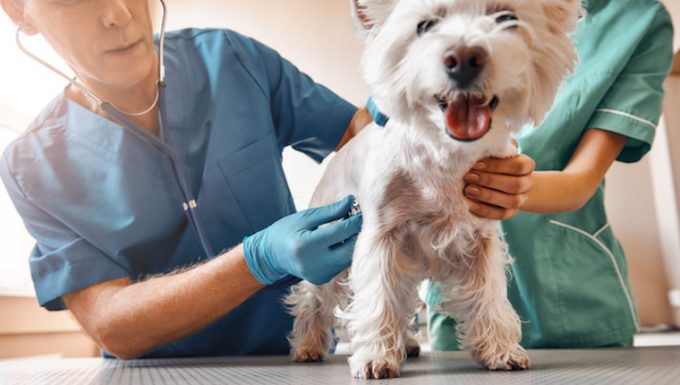Neuropathic pain in dogs is a condition that often happens after a dog suffers from a trauma or injury. The condition affects a dog’s nerves.
Unfortunately, the condition can be tricky to diagnose. This is because dogs can’t let us know precisely where any pain is.
The condition is also generally known as pain from the nervous system in dogs.
If you see the signs of the condition in your dog, then get to a veterinarian for a proper diagnosis and treatment.
Here’s what you should know about the symptoms, causes, and treatments for the condition.
Symptoms of Neuropathic Pain in Dogs
The condition produces a number of symptoms. For example, some of the most common symptoms include:
- Twitching
- Limping
- Avoiding exercise
- Muscles deteriorating
- Loss of appetite
- Incontinence
- Vocalizing pain
- Problems walking normally
- Change of posture
- Avoiding going up stairs
Causes of Neuropathic Pain in Dogs

The cause of the condition is usually a trauma or injury. Additionally, some of the other common causes include:
- Limb amputation
- Spinal tumors
- Diabetes
- Hypothyroidism
- Intervertebral disc disease (IVDD)
Treatments for Neuropathic Pain in Dogs
Firstly, your vet will ask about your dog’s symptoms. Secondly, your vet will carry out a full physical examination. This will involve testing your dog’s reflexes.
Thirdly, blood and urine tests will be taken. This is mainly to rule out other conditions. Additionally, X-rays can be used to help diagnose the condition.
Generally, treatment begins with the administration of analgesic medications. These will help to reduce your dog’s pain. As always, if your vet prescribes your dog any medicine, make sure to stick to the correct dose and frequency instructions. Also, complete the full course of medicine.
Additionally, acupuncture and targeted massages can also help dogs with this condition. Your vet can help recommend appropriate specialists to consult with.
Finally, remember that you will likely have to help reduce your dog’s pain from this condition for the rest of their lifetime. So stay patient and always keep your dog’s happiness in mind.
Have you ever cared for a dog who suffered from this condition? How did your vet help your dog recover? Let us know in the comments section below.









